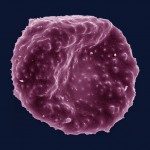Link to Pubmed [PMID] – 22443344
Malar. J. 2012 Mar;11:85
BACKGROUND: Early diagnosis, as well as prompt and effective treatment of uncomplicated malaria, are essential components of the anti-malaria strategy in Madagascar to prevent severe malaria, reduce mortality and limit malaria transmission. The purpose of this study was to assess the performance of the malaria rapid diagnostic tests (RDTs) used by community health workers (CHWs) by comparing RDT results with two reference methods (microscopy and Polymerase Chain Reaction, PCR).
METHODS: Eight CHWs in two districts, each with a different level of endemic malaria transmission, were trained to use RDTs in the management of febrile children under five years of age. RDTs were performed by CHWs in all febrile children who consulted for fever. In parallel, retrospective parasitological diagnoses were made by microscopy and PCR. The results of these different diagnostic methods were analysed to evaluate the diagnostic performance of the RDTs administered by the CHWs. The stability of the RDTs stored by CHWs was also evaluated.
RESULTS: Among 190 febrile children with suspected malaria who visited CHWs between February 2009 and February 2010, 89.5% were found to be positive for malaria parasites by PCR, 51.6% were positive by microscopy and 55.8% were positive by RDT. The performance accuracy of the RDTs used by CHWs in terms of sensitivity, specificity, positive and negative predictive values was greater than 85%. Concordance between microscopy and RDT, estimated by the Kappa value was 0.83 (95% CI: 0.75-0.91). RDTs stored by CHWs for 24 months were capable of detecting Plasmodium falciparum in blood at a level of 200 parasites/μl.
CONCLUSION: Introduction of easy-to-use diagnostic tools, such as RDTs, at the community level appears to be an effective strategy for improving febrile patient management and for reducing excessive use of anti-malarial drugs.

